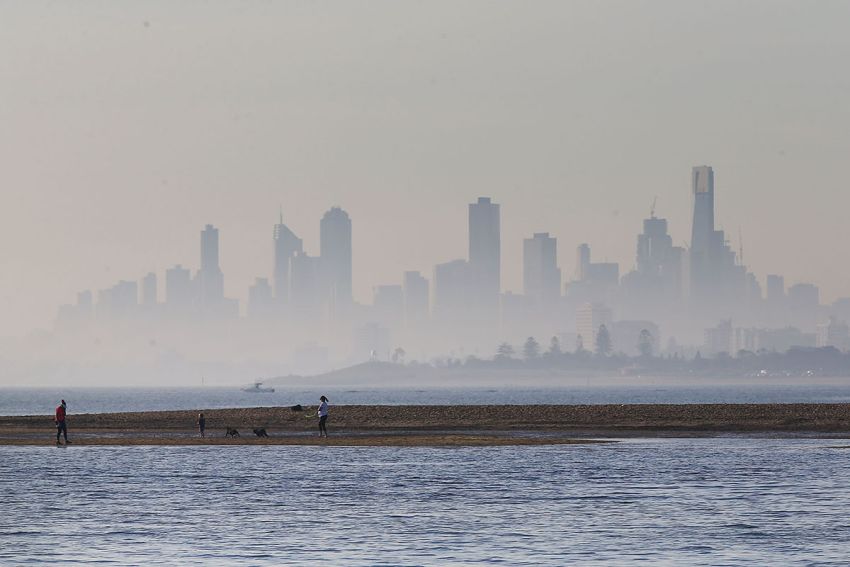
Looking out my office window in early January, the smoke haze blanketing Melbourne CBD blocked all sight of the city. It made visibility on the roads a problem and venturing outside a dangerous activity.
On one of the days when acrid smoke blanketed Melbourne, I had had to walk several kilometres and noticed people continuing with their daily work commute on a bicycle (some with face masks) and others exercising in the park. That day, I developed a severe headache and nausea. My subsequent investigations led me to believe that I was suffering from smoke exposure.
A colleague at the emergency department of a large Melbourne hospital confirmed they were dealing with a large rise in the number of patients presenting with migraines, nausea and vomiting on top of people presenting with respiratory conditions. Other colleagues confirmed they were seeing more of the same.
The troubling theme from my investigations was that, like me, many of the sufferers were relatively fit and healthy people. I thought back to those people I’d seen jogging and cycling and wondered if they had no choice or did not believe the warnings.
In some ways, acknowledging that the smoke blanketing the city is a serious health threat is to also acknowledge that the climate crisis is hitting us personally. Some are still hesitant to make that uncomfortable connection.
Not a lot is known about the health impacts of extended exposure to bushfire smoke. This highlights how unprecedented this fire season is. Laboratory studies indicate the short-term effects of bushfire smoke are comparable to the smoke from cigarettes. However, this cannot be extrapolated to determine the real-life impacts or the long-term effects.
Wood smoke contains at least 200 different chemicals, many of which are possible carcinogens. Add to this chemicals in smoke from plastics and other human-made substances from burning homes, cars, industrial and farm properties and you get a better sense of the toxic mix of chemicals we have been breathing in.
This summer’s fire season is not likely to be our last extended smoke exposure. As the climate crisis leads to longer fire seasons, more intense fires and larger geographical areas affected by the fires, our cities are likely to be shrouded in toxic smoke again. Understanding the effects of this smoke and action we can take to minimise exposure are essential.
Chair of the Victorian Committee of Doctors for the Environment Australia Dr Katherine Barraclough told Green Left the health implications are unknown.
“We just don’t have the research on the health implications of extended bushfire smoke exposure. This is an absolutely unprecedented situation,” Barraclough said.
“We know that PM [particulate matter] 2.5 and 10 are of particular concern as they can irritate the eyes, nose and throat, and can be breathed deeply into the lungs.
“Another concern is that PM 2.5 can be absorbed into the bloodstream, causing inflammation. Those with pre-existing heart and lung conditions are particularly susceptible to its impacts.
“In Sydney last December, during high smoke exposure days, there was a 25% increase in people presenting to hospitals with respiratory symptoms and a similar increase in ambulance call-outs.”
Barraclough emphasised that although risk is greatest in those with pre-existing conditions which are prone to become exacerbated during the fire smoke, everyone should be taking precautions.
Plain cloth masks are ineffective in filtering out particulate matter. P2 masks with filtration devices are recommended, however these need to be properly fitted across the mouth so that there is no leakage.
Barraclough said it is particularly hard to fit these masks properly on children’s faces and those with facial hair cannot achieve a proper seal. Long-term studies on the effectiveness of these masks in the context of bushfire smoke have not been undertaken.
Other recommendations from specialists include sealing up houses before the smoke arrives and minimising exercise on high smoke pollution days. Those with pre-existing conditions are encouraged to take preventative medicines and keep their medications on hand at all times.
Right now, without better policies, the effectiveness of this advice depends on people’s circumstances: can a drafty house be properly sealed? What about those renting? And what if you have no other choice but to commute to work by bike or you work outside?
Barraclough admits that there is a lot of policy catch-up needed and emphasises that this is why government and specialists need to look not just at the symptoms but also at the causes.
“Doctors treat the symptoms, but we also look for and try to prevent the causes. The cause of the smoke is the fires brought about by the changing climate. These fires will not be going away any time soon,” she said.
“We need decisive and long-term government action to address the climate emergency and its health implications on the population. We also need well-funded in-depth studies into the short, medium and long-term health effects of bushfire smoke pollution and other health implications of other aspects of climate change. We just don’t know enough about this uncharted territory.”